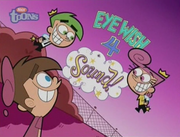(from: http://en.wikipedia.org/wiki/Narratology)
The Story:
Bala Kanda
Dasharatha was the king of Ayodhya. He had three queens: Kausalya,
Kaikeyi and Sumitra. He was childless for a long time and, anxious to produce
an heir, he performs a fire sacrifice known as Putra-Kameshti Yagya.[31] As a
consequence, Rama is first born to Kausalya, Bharata is born to Kaikeyi, and
Lakshmana and Shatrughna are born to Sumitra.[32][33] These
sons are endowed, to various degrees, with the essence of the God Vishnu; Vishnu had opted to be born into
mortality in order to combat the demon Ravana, who was oppressing the Gods, and
who could only be destroyed by a mortal.[34] The
boys are reared as the princes of the realm, receiving instructions from the
scriptures and in warfare. When Rama is 16 years old, the sage Vishwamitra
comes to the court of Dasharatha in search of help against demons, who were
disturbing sacrificial rites. He chooses Rama, who is followed by Lakshmana,
his constant companion throughout the story. Rama and Lakshmana receive
instructions and supernatural weapons from Vishwamitra, and proceed to destroy
the demons.[35]
Ayodhya Kanda
After Rama and Sita have been married for twelve years, an elderly
Dasharatha expresses his desire to crown Rama, to which the Kosala assembly and
his subjects express their support.[37][38] On
the eve of the great event, Kaikeyi—her jealousy aroused by Manthara, a wicked
maidservant—claims two boons that Dasharatha had long ago granted her. Kaikeyi
demands Rama to be exiled into wilderness for fourteen years, while the
succession passes to her son Bharata. The heartbroken king, constrained by his
rigid devotion to his given word, accedes to Kaikeyi's demands.[39] Rama
accepts his father's reluctant decree with absolute submission and calm
self-control which characterizes him throughout the story.[40] He
is joined by Sita and Lakshmana. When he asks Sita not to follow him, she says,
"the forest where you dwell is Ayodhya for me and Ayodhya without you is a
veritable hell for me."[41] After
Rama's departure, king Dasharatha, unable to bear the grief, passes away.[42] Meanwhile,
Bharata who was on a visit to his maternal uncle, learns about the events in
Ayodhya. Bharata refuses to profit from his mother's wicked scheming and visits
Rama in the forest. He requests Rama to return and rule. But Rama, determined
to carry out his father's orders to the letter, refuses to return before the
period of exile. However, Bharata carries Rama's sandals, and keeps them on the
throne, while he rules as Rama's regent.[39][42]
Aranya Kanda
Rama, Sita and Lakshmana journeyed southward along the banks of
river Godavari, where they
built cottages and lived off the land. At the Panchavati forest
they are visited by a rakshasa woman, Surpanakha, the
sister of Ravana. She attempts to seduce the brothers and, failing in this,
attempts to kill Sita. Lakshmana stops her by cutting off her nose and ears.
Hearing of this, her demon brother,Khara, organizes an
attack against the princes. Rama annihilates Khara and his demons.[43]
Kishkindha Kanda
The Kishkindha Kanda is set in the monkey
citadel Kishkindha.
Rama and Lakshmana meet Hanuman, the greatest of monkey heroes and an adherent
of Sugriva, the
banished pretender to the throne of Kishkindha.[48] Rama
befriends Sugriva and helps him by killing his elder brother Vali thus
regaining the kingdom of Kiskindha, in exchange for helping Rama to recover
Sita.[49] However
Sugriva soon forgets his promise and spends his time in debauchery. The clever
monkey Queen Tara,
second wife of Sugriva (initially wife of Vali), calmly
intervenes to prevent an enraged Lakshmana from destroying the monkey citadel.
She then eloquently convinces Sugriva to honor his pledge. Sugriva then sends
search parties to the four corners of the earth, only to return without success
from north, east and west.[50] The
southern search party under the leadership of Angad and Hanuman learns from a vulture
named Sampati that
Sita was taken to Lanka.[50][51]
Sundara Kanda
Yuddha Kanda
The War of Lanka by Sahibdin.It depicts
the monkey army of the protagonist Rama (top left, blue figure) fighting the
demon-king of the king of Lanka, Ravana in order to save Rama's kidnapped
wife Sita. The painting
depicts multiple events in the battle against the three-headed demon generalTrisiras, in bottom
left – Trisiras is beheaded by the monkey-companion of Rama – Hanuman.
Uttara Kanda
The Uttara Kanda is regarded to be a later
addition to the original story byValmiki and
concerns the final years of Rama, Sita, and Rama's brothers. After being
crowned king, many years passed pleasantly with Sita. However, despite
the Agni Pariksha (fire ordeal) of Sita, rumours about her
purity are spreading among the populace of Ayodhya. Rama yields to public
opinion and reluctantly banishes Sita to the forest, where sage Valmiki
provides shelter in hisashrama (hermitage). Here she gives birth to
twin boys, Lava and Kusha, who became pupils of Valmiki and are brought up in
ignorance of their identity.
(from: http://en.wikipedia.org/wiki/Ramayana)
The Criticism:
the story is on the form of a third person point-of-view which sets a perfect example of narration. Narration is the foremost element of narratology. Also, it is written in such a way that the data is presented neatly and organized for the reader's comfort and amusement.
the story is on the form of a third person point-of-view which sets a perfect example of narration. Narration is the foremost element of narratology. Also, it is written in such a way that the data is presented neatly and organized for the reader's comfort and amusement.






